Thomas Choi
Cell-free massive MIMO Channels in an Urban Environment -- Measurements and Channel Statistics
Jun 03, 2024
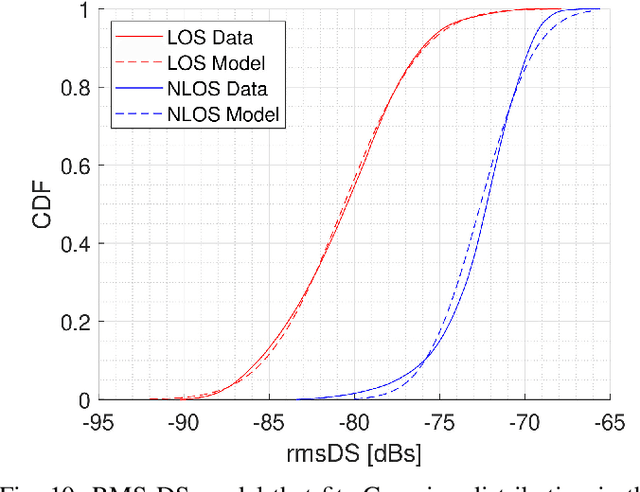
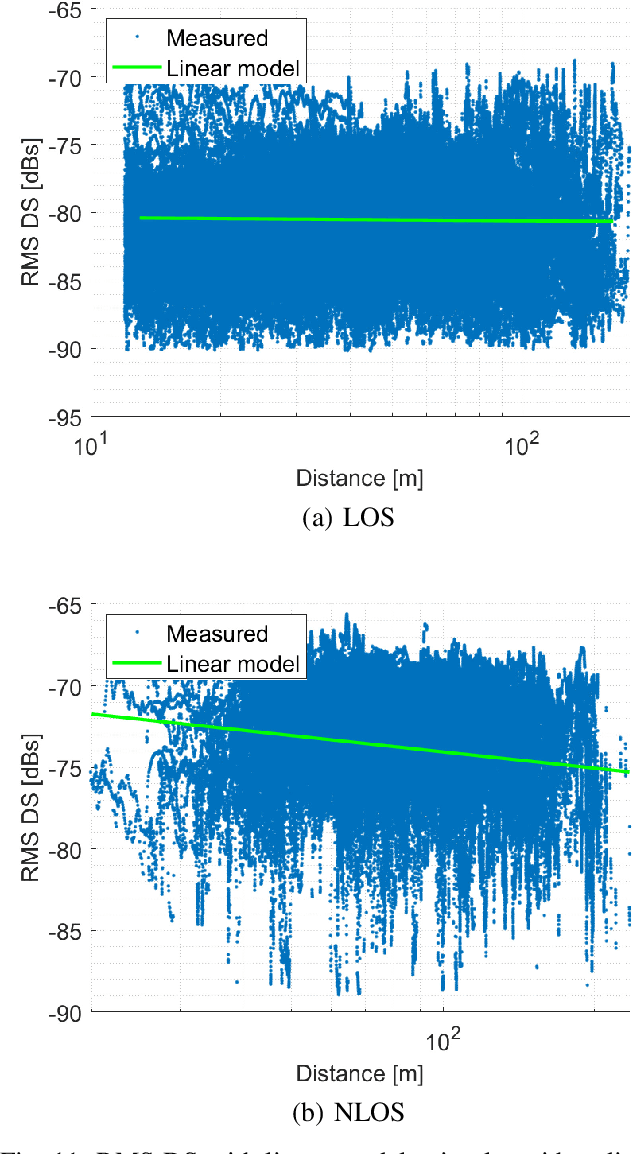
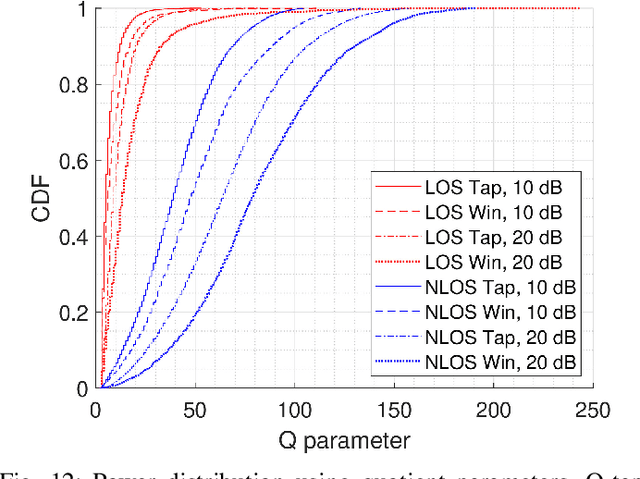
Abstract:Cell-free massive MIMO (CF-mMIMO), where each user equipment (UE) is connected to multiple access points (APs), is emerging as an important component for 5G and 6G cellular systems. Accurate channel models based on measurements are required to optimize their design and deployment. This paper presents an extensive measurement campaign for CF-mMIMO in an urban environment. A new "virtual AP" technique measures channels between 80 UE locations and more than 20,000 possible microcellular AP locations. Measurements are done at 3.5 GHz carrier frequency with 350 MHz bandwidth (BW). The paper describes the measurement setup and data processing, shows sample results and their physical interpretation, and provides statistics for key quantities such as pathloss, shadowing, delay spread (DS), and delay window. We find pathloss coefficients of 2.9 and 10.4 for line-of-sight (LOS) and non line-of-sight (NLOS), respectively, where the high LOS coefficient is mainly because larger distance leads to more grazing angle of incidence and thus lower antenna gain in our setup. Shadowing standard deviations are 5.1/16.6 dB, and root mean squared (RMS) DSs of -80.6/-72.6 dBs. The measurements can also be used for parameterizing a CUNEC-type model, which will be reported in future work.
Large-scale Outdoor Cell-free mMIMO Channel Measurement in an Urban Scenario at 3.5 GHz
May 31, 2024Abstract:The design of cell-free massive MIMO (CF-mMIMO) systems requires accurate, measurement-based channel models. This paper provides the first results from the by far most extensive outdoor measurement campaign for CF-mMIMO channels in an urban environment. We measured impulse responses between over 20,000 potential access point (AP) locations and 80 user equipments (UEs) at 3.5 GHz with 350 MHz bandwidth (BW). Measurements use a "virtual array" approach at the AP and a hybrid switched/virtual approach at the UE. This paper describes the sounder design, measurement environment, data processing, and sample results, particularly the evolution of the power-delay profiles (PDPs) as a function of the AP locations, and its relation to the propagation environment.
Seq2Seq-SC: End-to-End Semantic Communication Systems with Pre-trained Language Model
Oct 27, 2022



Abstract:While semantic communication is expected to bring unprecedented communication efficiency in comparison to classical communication, many challenges must be resolved to realize its potential. In this work, we provide a realistic semantic network dubbed seq2seq-SC, which is compatible to 5G NR and can work with generalized text dataset utilizing pre-trained language model. We also utilize a performance metric (SBERT) which can accurately measure semantic similarity and show that seq2seq-SC achieves superior performance while extracting semantically meaningful information.
Energy Efficiency of Uplink Cell-Free Massive MIMO With Transmit Power Control in Measured Propagation Channel
Nov 03, 2021



Abstract:Cell-free massive MIMO (CF-mMIMO) provides wireless connectivity for a large number of user equipments (UEs) using access points (APs) distributed across a wide area with high spectral efficiency (SE). The energy efficiency (EE) of the uplink is determined by (i) the transmit power control (TPC) algorithms, (ii) the numbers, configurations, and locations of the APs and the UEs, and (iii) the propagation channels between the APs and the UEs. This paper investigates all three aspects, based on extensive (~30,000 possible AP locations and 128 possible UE locations) channel measurement data at 3.5 GHz. We compare three different TPC algorithms, namely maximization of transmit power (max-power), maximization of minimum SE (max-min SE), and maximization of minimum EE (max-min EE) while guaranteeing a target SE. We also compare various antenna arrangements including fully-distributed and semi-distributed systems, where APs can be located on a regular grid or randomly, and the UEs can be placed in clusters or far apart. Overall, we show that the max-min EE TPC is highly effective in improving the uplink EE, especially when no UE within a set of served UEs is in a bad channel condition and when the BS antennas are fully-distributed.
Evaluation on Energy Efficiency of UE in UL Cell-Free Massive MIMO System With Power Control Methods
Oct 04, 2021



Abstract:Cell-free massive multiple-input multiple-output (CF mMIMO) systems are expected to provide faster and more robust connections to user equipments (UEs) by cooperation of a massive number of distributed access points, and to be one of the key technologies for beyond 5G (B5G). In B5G, energy efficiency (EE) is one of the most important key indicators because various kinds of devices connect to the network and communicate with each other. While previously proposed transmit power control methods in CF mMIMO systems have aimed to maximize spectral efficiency or total EE, we evaluate in this paper a different approach for maximizing the minimum EE among all UEs. We show that this algorithm can provide the optimum solution in polynomial time, and demonstrate with simulations the improved minimum EE compared to conventional methods.
Uplink Energy Efficiency of Cell-Free Massive MIMO With Transmit Power Control in Measured Propagation Channels
Aug 04, 2021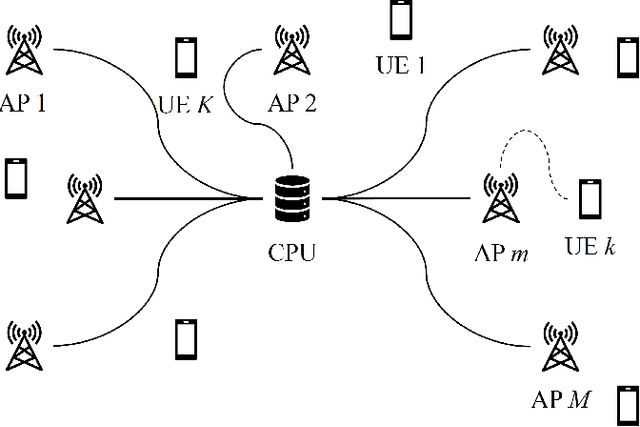
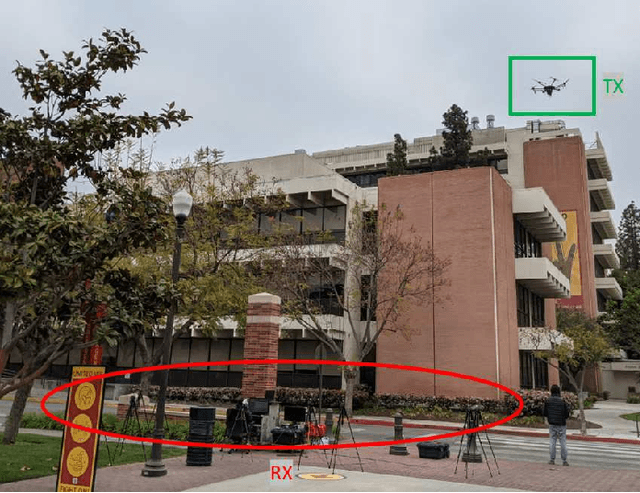
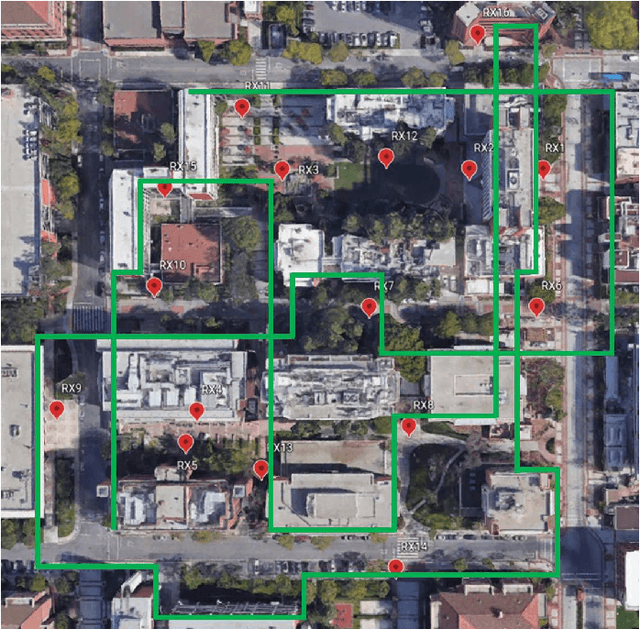
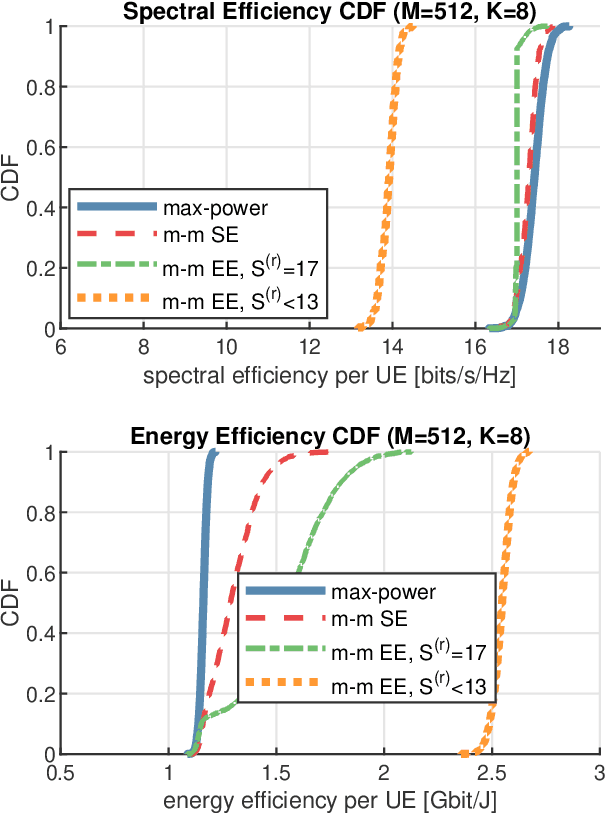
Abstract:Cell-free massive MIMO (CF-mMIMO) is expected to provide reliable wireless services for a large number of user equipments (UEs) using access points (APs) distributed across a wide area. When the UEs are battery-powered, uplink energy efficiency (EE) becomes an important performance metric for CF-mMIMO systems. Therefore, if the "target" spectral efficiency (SE) is met, it is important to optimize the uplink EE when setting the transmit powers of the UEs. Also, such transmit power control (TPC) method must be tested on channel data from real-world measurements to prove its effectiveness. In this paper, we compare three different TPC algorithms using zero-forcing reception by applying them to 3.5 GHz channel measurement data featuring ~30,000 possible AP locations and 8 UE locations in a 200mx200m area. We show that the max-min EE algorithm is highly effective in improving the uplink EE at a target SE, especially if the number of single-antenna APs is large, circuit power consumption is low, and the maximum allowed transmit power of the UEs is high.
 Add to Chrome
Add to Chrome Add to Firefox
Add to Firefox Add to Edge
Add to Edge